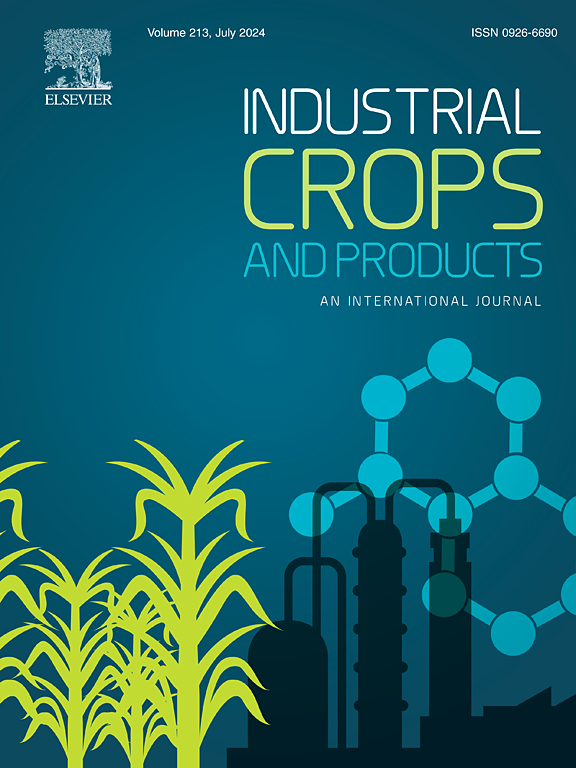利用面包垃圾衍生淀粉和碳量子点开发智能食品包装
IF 6.2
1区 农林科学
Q1 AGRICULTURAL ENGINEERING
引用次数: 0
摘要
这项研究探索了一种创新的方法,将剩余的面包(食物浪费的主要来源)转化为环保的包装材料。利用超声辅助水热法和无化学试剂的方法,从面包中提取碳量子点(QDs)和淀粉(ST)。然后用溶剂铸造法将ST、甘油、QDs (ST的1 %或3 wt%)和芫荽素(AL)混合,制备智能薄膜。量子点具有紫外线屏障、光致发光、抗氧化活性(79.13% % DPPH自由基清除),对小鼠成纤维细胞的毒性低于200 µg/mL。它们的加入提高了薄膜的塑性,伸长率提高了59 %,增强了水蒸气阻隔性,提高了表面疏水性。抗菌膜对大肠杆菌的抑制率为47.77 %,对金黄色葡萄球菌的抑制率为97.82 %。量子点与AL之间的相互作用导致比色膜对氨和乙酸蒸气的视觉颜色变化减小;然而,他们增强了薄膜的荧光特性。本研究介绍了一种可持续的生物精炼策略,将面包垃圾升级为智能包装,减少浪费并有助于食品腐败监测。本文章由计算机程序翻译,如有差异,请以英文原文为准。

Development of smart food packaging from bread waste-derived starch and carbon quantum dots
This study explores an innovative approach to transforming leftover bread, a major source of food waste, into eco-friendly packaging materials. Using the ultrasound-assisted hydrothermal method and a chemical-free approach, carbon quantum dots (QDs) and starch (ST) were derived from leftover bread. Smart films were then developed by blending ST, glycerol, and QDs (1 % or 3 wt% of ST) and alizarin (AL), using solvent casting. QDs exhibited UV-barrier, photoluminescent, antioxidant activity (79.13 % DPPH radical scavenging), and low toxicity to murine fibroblasts below 200 µg/mL. Their inclusion improved film plasticity, increased elongation by 59 %, enhanced the water vapor barrier, and raised surface hydrophobicity. The films showed antibacterial effects, inhibiting E. coli by 47.77 % and S. aureus by 97.82 %. Interactions between QDs and AL led to a reduced visual color change in the colorimetric films in response to ammonia and acetic acid vapors; however, they enhanced the films' fluorescent properties. This study introduces a sustainable biorefinery strategy to upcycle bread waste into smart packaging, reducing waste and contributing to food spoilage monitoring.
求助全文
通过发布文献求助,成功后即可免费获取论文全文。
去求助
来源期刊

Industrial Crops and Products
农林科学-农业工程
CiteScore
9.50
自引率
8.50%
发文量
1518
审稿时长
43 days
期刊介绍:
Industrial Crops and Products is an International Journal publishing academic and industrial research on industrial (defined as non-food/non-feed) crops and products. Papers concern both crop-oriented and bio-based materials from crops-oriented research, and should be of interest to an international audience, hypothesis driven, and where comparisons are made statistics performed.
 求助内容:
求助内容: 应助结果提醒方式:
应助结果提醒方式:


